
From the vibrant Kew Orchid Festival to the magical Wakehurst Glow Wild light trail, there’s something special to see in the botanical gardens each season. Enjoy year-round delights thanks to unlimited access with Boundless.
A visit to Kew or Wakehurst is a chance to wander, relax and admire the turning of the seasons. Stay for just an hour, or linger all day, there’s something for everyone. Throughout the year the gardens offer new experiences and discoveries, not only the treasures of beautiful seasonal displays but also historic architecture, exquisite botanical art and a range of exhibitions.
Boundless membership includes unlimited annual access to both gardens, making it easy to visit regularly and enjoy these unique landscapes. Members also get 50% off entry for an additional adult, free entry for up to five children and a 10% discount in the Kew shop both online and in store.
Already a Boundless member? Simply log in to gain full access to all the offers and benefits included in your membership.
Not yet a member? If you're working in or retired from the public sector or civil service, Boundless has two great membership options to choose from: Boundless and Boundless Plus. Enjoy unlimited access or discounted entry to many of the UK’s top attractions, as well as year-round deals on restaurants, holidays, shopping and much more.
To find the season you'd like to view, simply click on a link to jump to:
- Year-round highlights at Kew
- Year-round highlights at Wakehurst
- Spring at Kew and Wakehurst
- Summer at Kew and Wakehurst
- Autumn at Kew and Wakehurst
- Winter at Kew and Wakehurst
- Worth knowing before you visit Kew and Wakehurst
Year-round highlights at Kew

Photo credit: The Great Broad Walk Borders at Kew, Jeff Eden, RBG Kew
Kew Gardens, on the outskirts of south-west London, spans 330 acres and holds one of the most diverse collections of living plants in the world. In a time when nature is increasingly recognised for its role in mental health and climate change solutions, every one of the 50,000 living plants held at this Unesco World Heritage site is precious, and Kew’s programme of research, conservation and education is at the heart of what makes this garden tick.
Visitors to Kew Gardens can discover a wealth of attractions, from iconic landmarks to fascinating exhibitions. Here’s a glimpse at just a few highlights…
Kew Palm House
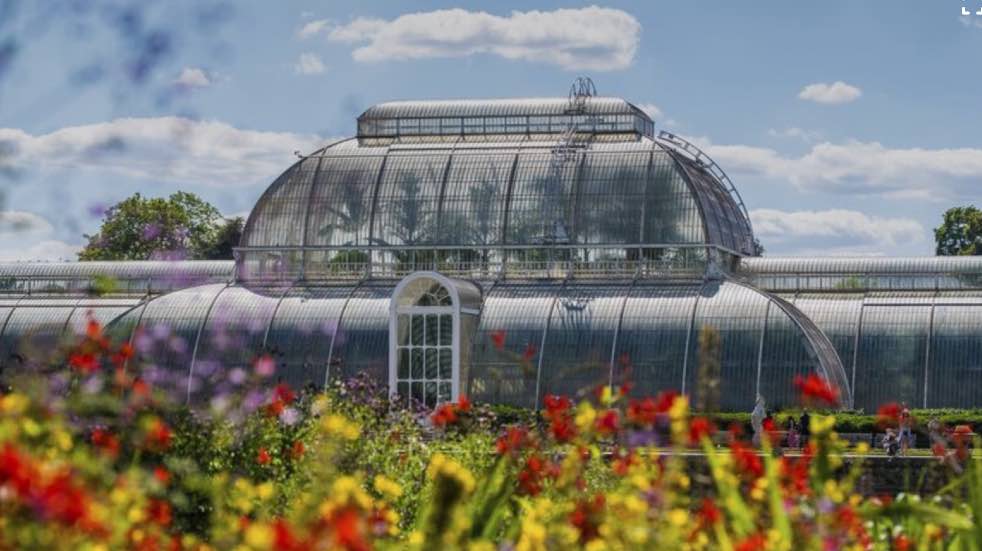
Photo credit: Palm House in summer, Ines Stuart-Davidson © Board of Trustees, RBG Kew
Built in 1844, Kew’s iconic glasshouse showcases tropical plants (many endangered in the wild) from around the world, creating a fabulously immersive indoor rainforest, humid and dense with vegetation. Look out for Encephalartos altensteinii, the oldest potted plant in the world, dating from 1775.
Temperate House
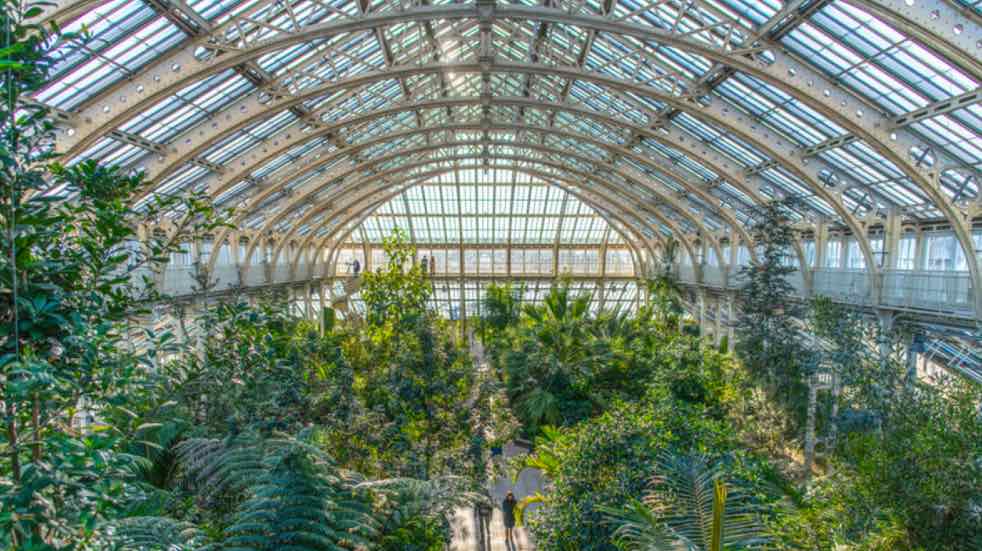
Photo credit: Inside the Temperate House, Kew Gardens
Alongside the Palm House, the Temperate House is one of Kew’s most recognisable landmarks. Built in 1863, it holds the title of the world's largest surviving Victorian glasshouse and is home to an extraordinary collection of rare and exotic plants from remote places in the world, such as the Pitcairn Islands.
Visitors can wander through its diverse sections, marveling at over 10,000 plant specimens from temperate regions, including palms, ferns, and cacti from Africa, Australia, New Zealand, the Americas, Asia, and the Pacific Islands. Climb the spiral staircase to enjoy looking down on the foliage canopy from the gallery walkway.
Princess of Wales Conservatory
Completed in 1987, the Princess of Wales Conservatory is one of Kew Gardens' most popular attractions. Featuring 10 different climatic zones from dry tropics to steamy tropical environments, this is where you’ll find the world’s smallest waterlily as well as the titan arum Amorphophallus titanum – known for its enormous and foul-smelling flower.
Look out for news of its infrequent flowering – it’s fascinating to see. Visitors can explore a diverse collection of plants, from carnivorous species like Venus flytraps and pitcher plants to vibrant bromeliads and giant waterlilies, each thriving in their carefully maintained environments.
The Great Pagoda
You catch sight of this stunning 18th-century structure from various points in the garden. It makes a great destination for a general wander, plus you can climb to the top for panoramic views.
Treetop Walkway
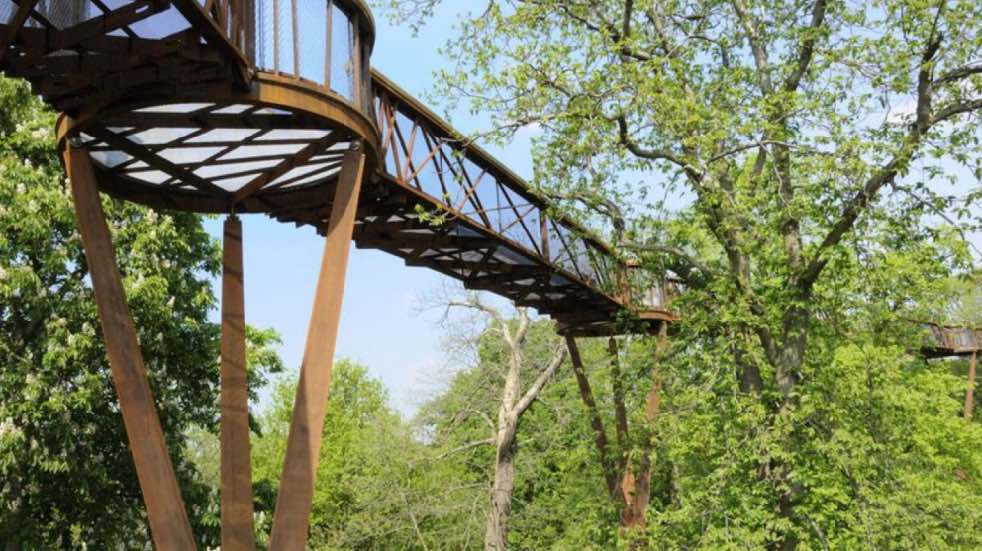
Photo Credit: Treetop walkway, RBG Kew
An adventure for the whole family, this 18-metre-high walkway winds through and above the tree canopy to give a unique perspective on the garden’s some 12,000 trees. The 200-metre walkway stands at 18 metres high, providing excellent views of the surrounding landscape. Built from weathered steel that seamlessly blends with the natural environment, this elevated walkway will see you strolling among the branches of oak, horse chestnut and pine trees (to name just a few).
Visitors can also learn about the importance of trees and their role in our ecosystem. Plus, the 188 steps to the top of the walkway are surprisingly manageable, being split across several flights with long landings between each. Perfect for viewing the changing seasons.
The Alpine House
Showcasing an exquisite collection of delicate alpine plants, this small but perfectly formed gem is particularly fine in spring. The Davies Alpine House, Kew’s newest glasshouse, was completed in 2006 and designed specifically to recreate the ideal conditions for high-altitude plants.
Step inside to discover a stunning array of mountain flora, from vibrant flowers to delicate mosses, ferns, and lichens. The space also features a thoughtfully designed rock garden, offering a naturalistic setting for many of the alpine species on display.
Explore the Shirley Sherwood Gallery at Kew
A captivating collection of botanical art displaying items from Kew’s archive of 200,000 botanical images alongside contemporary additions and regular exhibitions.
Children’s Garden

Photo credit: Children’s garden, Jeff Eden, Kew
Created for children aged between 2 and 12, this hugely popular play area features four sections – the Air, Sun, Water and Earth gardens reflecting the elements plants need to thrive – with slides, balances, tunnels and winding paths encouraging activity and exploration.
Read on to discover how family blogger Katy Stern, aka Otis and Us, enjoyed a day out at Kew with her family.
Arboretum
At Kew there are 11,000 trees covering some 2,000 species from majestic oaks to towering cedar trees and rare Wollemi pines. Be sure to read the information boards alongside many of the trees to find out more about their history and facts. Pick up a Remarkable Tree Trail leaflet to follow.
Year-round highlights at Wakehurst
Wakehurst in Sussex is Kew’s countryside sister garden. Five hundred acres of walled and water gardens, arboretum and state-of-the-art Millennium Seed Bank provide a botanical discovery.
Millennium Seed Bank
The world’s largest wild plant seed bank focuses on conserving seeds from useful, threatened, and rare species. Visit to learn about conservation efforts and see how specimens are stored.
Westwood Valley and Pinetum
Collections of native and exotic tree species provide tranquil woodland walks along shaded paths.
Seasonal highlights to see at Kew and Wakehurst
Spring at Kew and Wakehurst
Visit early in the year and enjoy the sense of unfurling new growth. From the swathes of crocus and narcissus in February through to the spellbinding blue haze of the scilla lawn in March and bluebell displays in April. The magnolia displays in February/March, and cherry blossoms and rhododendrons in April/May are magical – and the whimsical tulip-dotted grass borders are a delight too.
Spring discovery: At Wakehurst, a magnificent display of rhododendrons bloom in April, followed by carpets of bluebells in Bethlehem Wood, the flaming red Chilean Firebush in the Southern Hemisphere garden, and then the wisteria comes into its own.
Discover orchids at Kew Gardens
Kew’s Orchid Festival, London, 1 February – 2 March
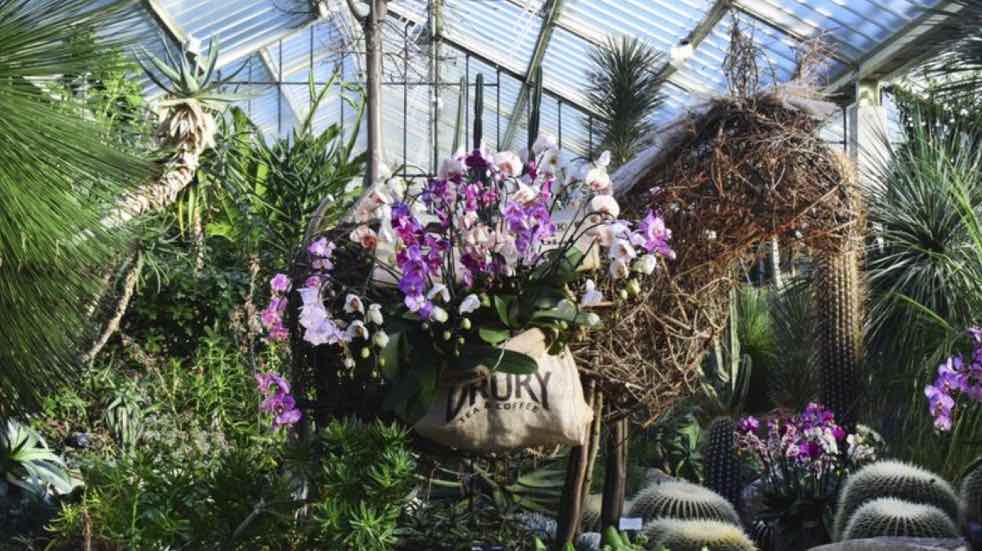
Photo credit: Orchid festival at Princess of Wales' Conservatory, © Board of Trustees, RBG Kew
Kew’s Orchid Festival, held annually in February, showcases a fascinating and vibrant selection of plants with floral sculptures and artistic installations. This year, Kew’s annual Orchids festival celebrates the stunning landscapes of Peru. From beaches and deserts to mountains, valleys, and rainforests, discover one of the most biodiverse places on Earth. Entry is included with your ticket; but you’ll need to select a time slot when booking.
Boundless members enjoy access to year-round savings, including unlimited entry to Royal Botanic Gardens, Kew and Wakehurst. Find out more about Boundless membership and how to join.
Summer at Kew and Wakehurst
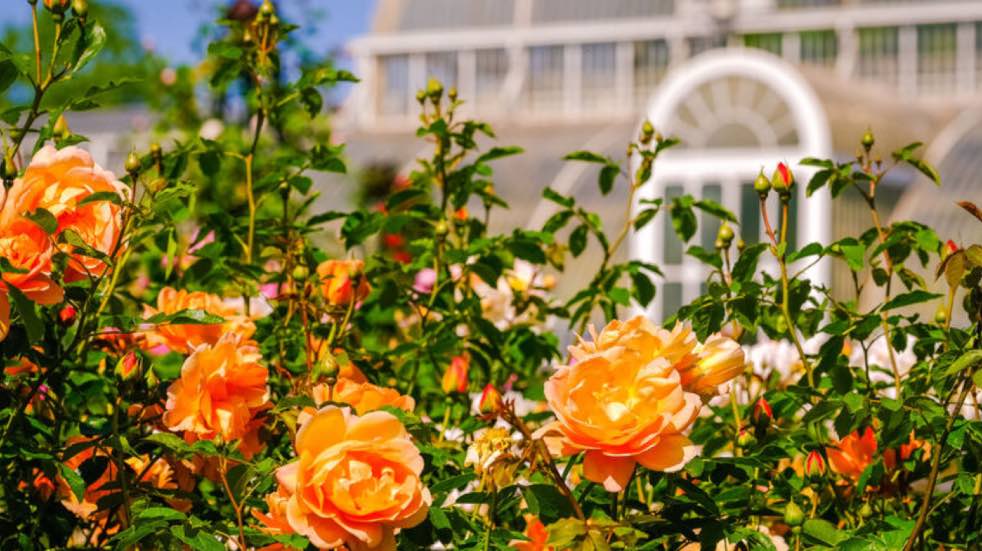
Photo credit: Summer in the Rose Garden at Kew, Sebastian Kettley © RBG Kew
Kew and Wakehurst offer dappled sunlight and places to sit and ponder as the temperatures rise and daylight lingers later. Wander into the Rose Garden in June and you’ll be enveloped in fragrance, while the Mediterranean Garden comes into its own with its sun-loving plantings of olives, cistus and Italian cypress. This is the season when Kew’s Great Broad Walk Borders crescendo in colour along its 320 metres.
The Hive
While much of the garden’s attractions focus on the plants, The Hive at Kew highlights the life of bees. This large-scale installation is a seemingly chaotic yet highly ordered mesh of tubes fitted with 1,000 LED lights that glow in response to the vibrations made by bees in the garden, accompanied by a musical symphony. Set within a wildflower meadow, it’s a tingling sensory experience that highlights the intricacies and delicacy of our ever-busy eco systems.
Don’t miss Wakehurst’s own meadows. The Coronation Meadow, Bloomers Valley and American Prairie come to life in high summer, with mown paths leading you through wildflowers and grasses that are busy with insects on sunny days.
Summer discovery: Both Kew and Wakehurst host a programme of summertime events, including concerts, plays and wellbeing activities. Why not book a Forest Bathing tour to discover more about the gardens’ key trees and appreciate time spent in nature?
Autumn at Kew and Wakehurst
Experience autumn gardens at Kew and Wakehurst
Both gardens revel in their autumn colours, and Kew’s Treetop Walkway is an obvious vantage point to appreciate the display. The lakeside, too, is a beautiful spot – head there and enjoy serene reflections.
The Japanese Garden at Kew: a tranquil retreat
Take time to wander out to the contemplative Japanese Garden, with its traditional gateway, raked gravel, fiery autumn foliage displays and late summer/early autumn Japanese anemones. Also at Kew is the Grass Garden – wonderful in low autumn sunlight with a gentle breeze animating the golden flowering stems.
Autumn discovery: The Elizabethan Mansion at Wakehurst is currently closed for restoration, with works scheduled to be completed in summer 2025, so this could be the perfect time to admire it. Check the website for updates.
Winter at Kew and Wakehurst
The gardens give you a great reason to enjoy being outside and being active on crisp, fresh days, perhaps challenging yourself to walk to a previously undiscovered part of the grounds.
Kew’s new Winter Garden highlights striking winter planting from the bright stems of dogwood to the fragrant fiery blooms of witch hazel and early flowering hellebores, snowdrops and cheery yellow winter aconites.
The Winter Garden at Wakehurst features some 33,000 plants including swathes of cyclamen and snowdrops, with the white trunks of Himalayan silver birch trees glowing in the low winter light.
Kew Gardens Illuminations: a magical experience
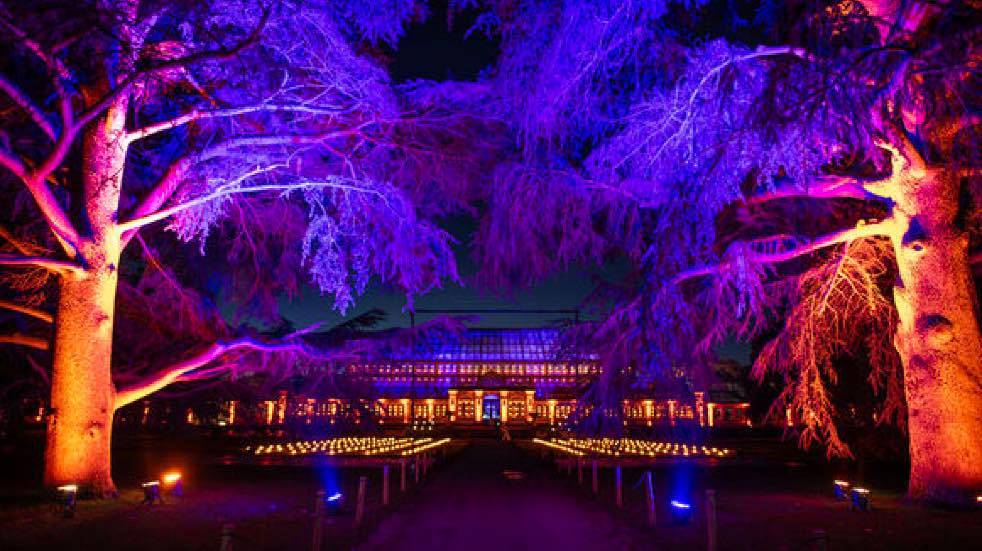
Photo credit: Kew Gardens illumination, RBG Kew
Winter discovery: Christmas at Kew is a spectacular light trail animating the garden and its iconic buildings in a series of laser projections, glittering trees, illuminated arches and other glimmering effects. Tickets for the 2025 events are now available to buy online.
Wakehurst’s Glow Wild light trail: a dazzling display
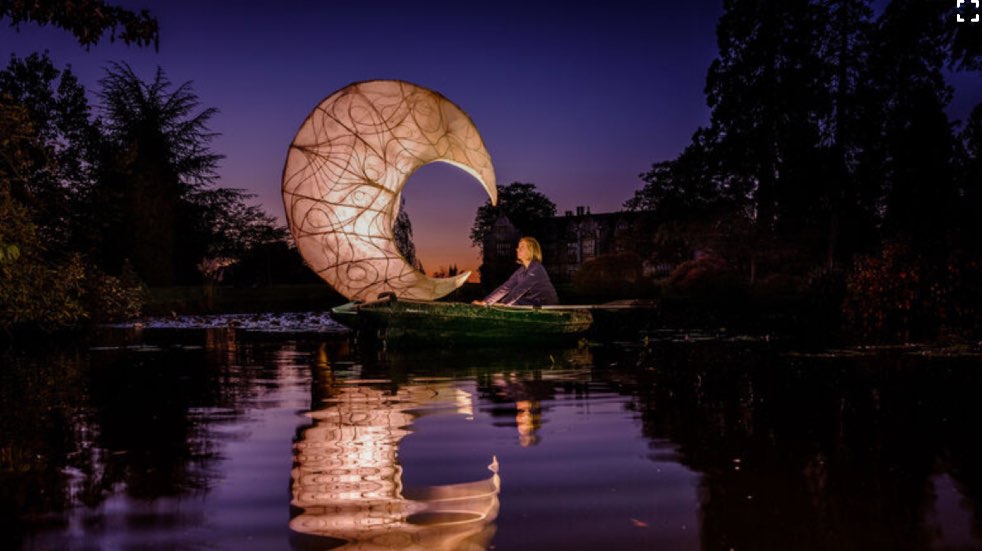
Photo credit: Glow Wild Wakehurst, ©Jim Holden, RBG Kew
Wakehurst’s Glow Wild is equally magical and boasts the UK’s tallest living Christmas tree.
Find out more about visiting Kew and Wakehurst using your Boundless membership.
Worth knowing before you visit Kew and Wakehurst
- Have some ideas about what you want to see. While wandering is highly recommended, knowing the highlights can enhance your visit. Check for events and exhibitions, pick up a map at the entrance (or download one online) and read the helpful blackboards that note what’s looking good that day.
- There’s limited car parking at Kew, but the site is easily accessible via public transport – check Transport for London to plan your travel. Free parking is available at Wakehurst for garden ticket holders and members.
- Check opening times as these vary through the year. Members can enjoy early access to the gardens in summer – well worth taking advantage of.
- Take a ride on the land train at Kew (ticket needed) to visit various spots around the gardens.
- The Children’s Garden holds Quiet Sessions available March to October for children with special educational needs and disabilities (booking required).
Do more with Boundless
If you're working in or retired from the public sector or civil service, Boundless has two great membership options to choose from: Boundless and Boundless Plus.
With Boundless, you get unlimited access or discounted entry to many of the UK’s top attractions including Kew Gardens and Wakehurst and WWT centres across the UK, as well as year-round deals on restaurants, holidays, shopping and much more. With Boundless Plus, you can enjoy additional benefits including unlimited access to Historic Royal Palaces sites, National Trust for Scotland places, access to the Ramblers' extensive group walks and routes, and peace of mind with roadside assistance and local recovery by LV= Britannia Rescue.





